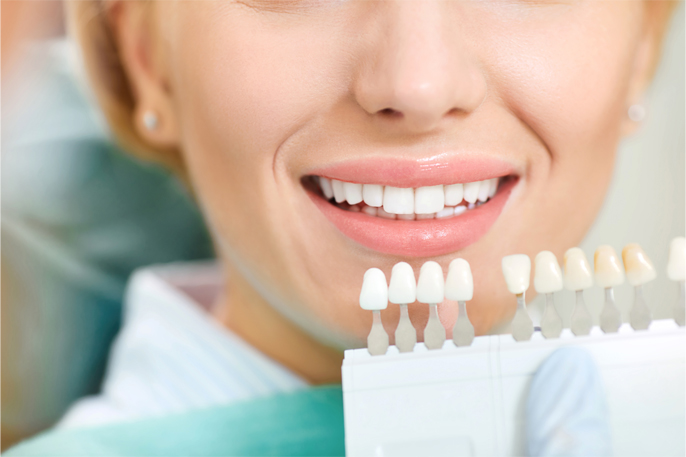Dental instruments play a crucial role in maintaining oral health, particularly during routine cleanings. These specialized tools allow dental professionals to effectively clean teeth, remove plaque and tartar, and ensure the overall health of the gums. Here’s a look at some of the primary instruments used during routine dental cleanings:
Continue reading “An Introduction to Dental Instruments | Fayetteville, GA”The Role Mouthwash Plays in Oral Hygiene | Fayetteville, GA
Mouthwash may seem like an unnecessary step for one’s oral care routine, and it’s true that in general, you can go without it. Yet, mouthwash could be a great way to gain peace of mind, keep tarter buildup at bay, and make you feel fresh before starting your day.
Continue reading “The Role Mouthwash Plays in Oral Hygiene | Fayetteville, GA”What To Know About Using Charcoal for Oral Care | Fayetteville, GA
In recent years, charcoal has gained popularity as a trendy ingredient in oral care products, promising a natural and effective solution for achieving a brighter, whiter smile. From charcoal toothpaste to charcoal-infused toothbrushes, the market is flooded with these products. However, before jumping on the charcoal bandwagon, it’s crucial to understand the pros and cons associated with using charcoal for oral care.
Continue reading “What To Know About Using Charcoal for Oral Care | Fayetteville, GA”The Tell-Tale Signs of an Oral Infection | Fayetteville, GA
Our oral health is a crucial aspect of our overall well-being, and paying attention to the signs of potential issues is essential. One common concern that often goes unnoticed is oral infections. In this blog post, we will explore the various signs that may indicate the presence of an oral infection and why it’s vital to address these issues promptly.
Continue reading “The Tell-Tale Signs of an Oral Infection | Fayetteville, GA”Tooth Discoloration Is More Telling Than You May Think | Fayetteville, GA
Maintaining proper oral health is not only crucial for a bright smile but also for overall well-being. One often overlooked indicator of improper oral health care is tooth discoloration. Discoloration can manifest in various ways, ranging from yellowing to brown spots, and can be a warning sign of underlying issues that demand attention.
Continue reading “Tooth Discoloration Is More Telling Than You May Think | Fayetteville, GA”Effective Tooth Brushing Tips | Fayetteville, GA
A sparkling smile not only enhances your appearance but also reflects good oral health. One of the simplest yet crucial habits to maintain that bright smile is proper tooth brushing. In this blog post, we’ll explore seven effective ways to brush your teeth, ensuring your dental hygiene is top-notch.
Continue reading “Effective Tooth Brushing Tips | Fayetteville, GA”The Relationship Between Oral Bacteria and Sugar | Fayetteville, GA
The human mouth is a bustling ecosystem, home to a diverse community of microorganisms, including bacteria. While these microscopic residents play crucial roles in maintaining oral health, an intricate dance unfolds when sugar enters the scene. This blog post delves into the fascinating interaction between sugar and bacteria in the mouth, shedding light on the consequences of this sweet partnership.
Continue reading “The Relationship Between Oral Bacteria and Sugar | Fayetteville, GA”The Five Stages of Tooth Decay | Fayetteville, GA
Tooth decay is not something to take lightly. In fact, it’s something to remain on the lookout for, as even those with a great oral care routine can experience tooth decay. Thankfully, the first stage of decay is the easiest stage to recognize and begin to take corrective actions. Yes, you can reverse decay with early detection! Here are the five stages of tooth decay:
Stage One: White Spots
In this stage, the tooth begins to show signs of strain from attacking sugars and acids. White spots will begin to materialize just below the surface of the enamel. They are a telltale sign that demineralization of the tooth has begun. But, it can be easy to miss because they’re likely to occur on you or your child’s molars first. Your dentist should be able to catch such warning signs during regular cleanings.
In the first stage of decay, this can be repaired without the need for extraction. Whether you’re a child or an adult, the application of fluoride via fluoride treatments, your toothpaste, salivation, the foods you eat, and even the local water supply can help re-mineralize the tooth and stop a cavity from penetrating through the enamel and reaching its second stage.
Stage Two: Enamel Decay
This is the beginning of the end for the surface enamel that is being attacked. Once a cavity breaks through the surface of the enamel, there is no turning back, and you or your child will need to have the cavity corrected with a filling. Teeth erode from the underside outward, so the outer enamel will still be intact for the first half of this second stage, but will be the next target.
Stage Three: Dentin Decay
Stage three is where you will notice a serious cause for concern if you or your dentist have missed the first two. This is the stage where patients begin experiencing pain, that is because the cavity begins to eat away at the second level of tooth material that lies beneath the enamel called dentin. A filling can still be used to stop bacteria from assaulting the tooth to prevent the cavity from reaching the tooth’s pulp.
Stage Four: Involvement of The Pulp
Once the infection reaches the pulp it’s going to hurt a lot. This is a serious point in the progression of decay where a root canal or full extraction will be evaluated by your dentist as the next phase of action.
Stage Five: Abscess Formation
At this point, the infection has reached the tip of the root and exited the tip of the tooth’s structure. It has infected the surrounding tissues and possibly the bone structure. You will likely experience swelling and severe pain. In children (as well as adults) an abscess can be fatal if not appropriately dealt with immediately.
Cavities don’t happen overnight. In the early stages, regular visits can stall and reverse the progression of decay, so it’s important to pay regular visits to the dentist. Catch cavities before they catch up to you by keeping the stages of decay in mind as you continue to care for your and your child’s teeth.
To schedule an appointment or learn more about the beautiful smiles Dr. Sukari McMiller has created visit us online today at www.dreamworksdentalcare.com.
Dr. Sukari McMiller proudly serves patients from Fayetteville and all surrounding areas.
Soda Impacts Your Smile: Here’s How | Fayetteville, GA
We can be the absolute best at maintaining our daily oral health routine, and the negative effects of soda will still catch up to us. It may not seem like a big deal; we consume sugary, acidic foods every day, but soda is a special exception. Here are some things we think you should consider before reaching for that next can or bottle of soda, and when evaluating your soda consumption habits.
Sugar Content
More than most beverages, soda contains a high amount of sugar. Sugar can coat our teeth or get stuck in the hard-to-reach spaces of our mouths, allowing sugar-eating bacteria to feed off it. These bacteria in turn excrete acid, and that acid is what contributes to tooth decay. The more sugar we consume, the more sugar the bacteria can consume, escalating our risk of decay.
Acidity
Sugar-eating bacteria can excrete acid, but there is also acid in the beverage itself. Diet sodas are no exception as they contain the same amounts of phosphoric and citric acid as non-diet varieties, even if they don’t contain the same amount of sugar. Acidic foods eat away at our protective enamel, leaving a tooth prone to decay.
Food Dye
A tooth can be stained by artificial food dyes such as caramel color, Yellow #5, etc. While coffee and other dark-colored beverages and foods may contribute to tooth staining as well, many of us consume a lot of soda, making it a primary culprit. If you want the flavor and fizz of something other than water, start swapping your soda with sparking flavored water, for all the fun without the stains.
To schedule an appointment or learn more about the beautiful smiles Dr. Here’s How McMiller has created visit us online today at www.dreamworksdentalcare.com.
Dr. Sukari McMiller proudly serves patients from Fayetteville and all surrounding areas.
Understanding Oral Cancer | Fayetteville, GA
Cancer is an uncomfortable thing to consider, and for many around the world is a trigger for distress. Yet, the key to beating cancer commonly comes down to early detection. It’s important to understand the warning signs to look out for at home so you can consult with your dentist about your concerns as soon as possible. Please note the following is not an exhaustive list within any of these categories, but they are important to keep in mind.
Risk Factors
Unfortunately, our age and certain lifestyle choices do put us at a greater risk of developing oral cancer. Here are some factors that contribute to our relative risk:
- Being genetically male
- Being over 40 years old
- People 18-39 who use tobacco, drink, or have been diagnosed with oral HPV
Warning Signs
If any of the following symptoms lasting more than 7-10 days, please seek the advice of your doctor. Keep in mind that these symptoms may also present themselves in the absence of pain. Be mindful of changes that can be detected on the lips, inside the cheeks, palate, and gum tissue surrounding your teeth and tongue.
- Reddish or whitish patches in the mouth
- Sores that fail to heal and bleed easily
- A lump or thickening on the skin lining the inside of the mouth
- Chronic sore throat or hoarseness
- Difficulty chewing or swallowing
Risk Reduction
One of the best ways to mitigate risk is through regular visits to your dentist. Over half of the patients diagnosed with oral cancer later into its progression survive for more than five years, so it’s important to remain on top of potential warning signs for early detection. If you recognize yourself as being at high risk for oral cancer according to the above list, you may consider increasing the frequency with which you visit your dentist.
Here are some other ways to reduce your risk of developing oral cancer:
- Avoid all tobacco
- Avoid or reduce alcohol intake
- Consume more fruits and vegetables
- Avoid excessive sun exposure that can result in cancer of the lip
- Avoid exposure to environmentally hazardous materials
- Conduct a self-exam monthly
- Use a small hand-held mirror so you can see the back of your mouth and tongue. If you notice something concerning, reach out to your dentist for a second opinion.
Oral cancer is serious and can happen to anyone, but if you keep this information in mind, you can mitigate your risk. Continue to attend your regular cleanings and reach out to your dentist with any concerns you may have; you may just catch a warning sign of oral cancer early, allowing you to intervene before it gets worse.
To schedule an appointment or learn more about the beautiful smiles Dr. Sukari McMiller has created visit us online today at www.dreamworksdentalcare.com.
Dr. Sukari McMiller proudly serves patients from Fayetteville and all surrounding areas.






